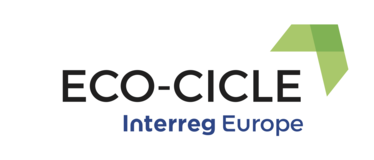Agenda
- 09:30 – 09:45 Welcome (Aufbauwerk)
- 09:45 – 10:15 Input Presentation: ADFC (Mr. Michael Berninger, ADFC Sachsen)
- 10:15 – 10:45 Input Presentation: Grüner Ring Leipzig (Ms. Heike König, GRL)
- 10:45 – 11:15 Regional Action Plan (Aufbauwerk)
- 11:15 – 12:15 Interactive Discussion (All partners)
- Inter-modality
- Touristic sign-posts
- E-bikes and charging stations - 12:15 – 12:30 Closure (Aufbauwerk)
Bakground information
1. Introduction of Region/Municipality
Leipzig Region is located in the East of Germany in the Free State of Saxony, which was part of the former GDR. It is composed of the City of Leipzig, the administrative district Leipzig and the administrative district Northern Saxony. The City of Leipzig in particular is the most important driver for the development of the surrounding area.
The region is located in the North European Plain. The site is characterized by swampy areas and the landscape is mostly flat, making it perfect for cycling. Before the reunification of Germany, the region’s main industry was open-cast coal mines. With the reunification, the mines closed and the project of Neuseenland emerged. The old open-cast mines are being converted into a huge lake district for leisure activities. Many of the lakes are already filled while others will need until 2060 to be completed.
In the administrative district Leipzig, there are 550 km of cycling routes, many being equipped with e-bike charging stations in different locations. One of the major cycling paths is “Grüner Ring Leipzig Cycling Route” which became part of “SachsenNetz Rad” (network of bike paths in the State of Saxony) in 2016. It is connected to many other routes in the region and part of a transregional network of cycling paths. GRL Cycling Route is a circular route around the City of Leipzig and goes through many parts of Leipziger Neuseenland.
2. The Policy Instrument
Leipziger Neuseenland is the area that the selected policy instrument focuses on. The policy instrument “Charta Leipziger Neuseenland 2030” is an informal instrument of regional development, based on the outcome of a citizens’ participatory process that started in 2014 and finished in 2015. The Charta acts as a frame for references to local key actors and as a vision for the future of the region. It is however a voluntary instrument with no budget attached to it.
The priorities of the Charta show many related topics to tourism in natural areas such as leisure, sport and infrastructure. Nevertheless, there is no special focus on cycling tourism yet. With the knowledge and experience gained through the ECO-CICLE project, new ways of fostering cycling tourism in the area are being developed. In this frame, the GRL Cycling Route was selected for the implementation of actions during the project. Thereby, an extension of the Charta towards cycling tourism is foreseen to achieve long-term results in the region.
3. Local and Regional Actors
As the region of Leipzig includes several administrative districts, there are various local actors involved in decision-making processes. Besides the typical administrative stakeholders, regional associations are having an influence in shaping the local area and especially the foreseen actions within the project. This includes Grüner Ring Leipzig (GRL) within the ECO-CICLE project scope.
Grüner Ring Leipzig is a regional association of cities and municipalities and an important part of the regional governance structure. Originally launched in 1996 to increase the attractiveness of Leipzig and its surrounding area, it is an inter-communal organization that serves a wide range of topics related to regional development today. GRL currently has 16 members: 14 cities and the two administrative districts Leipzig and Northern Saxony. Ecological aspects form a main area of expertise, especially when it comes to the development of natural tourism. For a sustainable management, various working groups and sub-working groups have been set up within the association in order to develop suitable action plans with stakeholders from industry and civil society.
4. Activities in the Region/Municipality
In the area of cycle tourism, Grüner Ring Leipzig implemented two circular cycle routes over almost 200 km length, which enables the touristic linkage of all 16 participating cities and districts. There is a bike path of 65 km length along the city limits of Leipzig and a 134 km long regional bike path through the rural surroundings. While the shorter route still exists, the 134 km path became the focus project “GRL Cycling Route”. Current points of action include increasing the quality of existing paths (depiction, nature), creating barrier-free crossings (including for wheelchair users) as well as promoting intramodality and electromobility, e.g. by spreading bike and ride facilities close to public transportation or by expanding charging stations for e-bikes and e-boats. Overall, the quality of the route has to be maintained and regularly improved.


